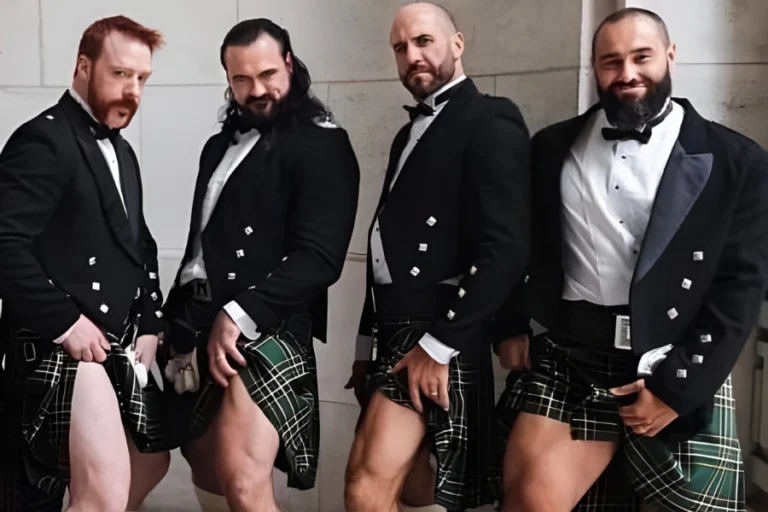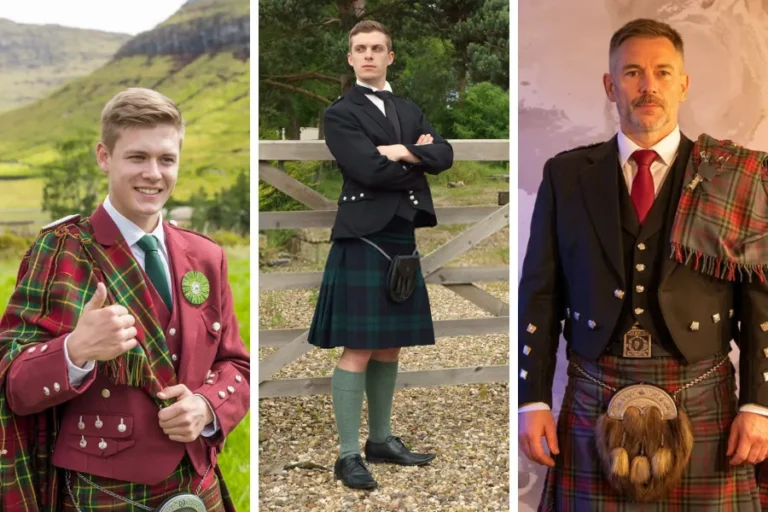What To Wear To Scotland As a Tourist: Should You Wear a Kilt?
It’s one of those questions that starts out kind of playful, but then gets more complicated the longer you think about it.
You’re going to Scotland. Maybe it’s a dream trip, a long-anticipated holiday. You’ve got the itinerary lined up—Edinburgh Castle, a couple of lochs, a distillery tour (or three). And somewhere in your planning, the idea creeps in: Should I pack a kilt? Or buy one there? Or is that weird?
There’s no definitive answer. Not really. But let’s talk it through.
First Things First: What’s the Weather Like?
Scotland is stunning. It’s also famously unpredictable when it comes to weather. You might start the day under a bright sky and end it drenched in sideways rain. Or vice versa. The point is, layering matters.
You’ll want waterproof shoes. Not necessarily full-on hiking boots unless you’re hitting the Highlands, but definitely something sturdy. And a light waterproof jacket? Essential. Even if it never rains, it might.
Jeans, leggings, lightweight sweaters—those are all safe bets. Think practical, not fashionable. Although honestly, plenty of people still manage to look sharp in scarves and boots and wind-resistant trench coats.
Now, as for kilts…
So… Can Tourists Wear Kilts?
The short answer is: yes. The longer answer is: yes, but with some nuance.
Custom Kilts are more than just traditional Scottish dress. They’re symbolic, tied to identity, history, and for many Scots, something deeply personal. That doesn’t mean they’re off-limits to outsiders, but it does mean wearing one should come with some basic respect and context.
If you’re thinking of wearing a tartan kilt because you genuinely love the look, or because you want to honor your Scottish ancestry—even if it’s a few generations back—that’s generally welcomed. Scotland tends to be pretty open about this kind of thing.
But if you’re throwing one on for a laugh, or treating it like a costume… well, that can come across as tone-deaf. It’s a bit like turning someone’s culture into a novelty—and that never lands well, anywhere.
Heritage or Not, It Depends How You Do It
There are people who wear kilts because they belong to a clan. There are others who wear them for weddings, graduations, or rugby matches. And there are folks who just… really like scottish kilts. No Scottish blood in them at all.
If you’re not sure where you fall on that spectrum, ask yourself why you want to wear one.
If it’s because you’ve always been curious, and you want to experience it authentically—maybe even buy one while you’re there from a proper shop—then go for it. Just skip the novelty tartan ones with the plastic buckles. You know the kind. They’re more Halloween costume than clothing.
A well-made kilt, even a simple one in a universal tartan, sends a totally different message. And people can usually tell.
What About Locals? Will They Judge?
This is the part people get nervous about. “Will I look ridiculous?” “Will they think I’m mocking them?” Or the quiet one a lot of people don’t say out loud: “Will they think I’m trying too hard?”
From what I’ve seen—and I’ve been to Scotland a couple times—most Scots are more amused than offended when tourists wear kilts. Especially if it’s done with interest and not irony. A local might smile or make a gentle joke, but you’re not going to be chased through the streets of Inverness for wearing a kilt wrong.
That said, you probably won’t see many Scots walking around in kilts day-to-day. Outside of formal events or Highland gatherings, kilts aren’t everyday attire. So if you’re walking around town in full Highland dress, you’ll definitely stand out. That’s not necessarily bad. Just… noticeable.
What’s The Right Way To Wear a Kilt?
Here’s where it can get a little tricky. Because there is a traditional way to wear a kilt, and getting it right takes more than just strapping on a skirt and calling it a day.
A proper outfit usually includes:
- A sporran (the pouch that hangs in front)
- Kilt hose and flashes (those are the long socks and garters)
- A jacket or waistcoat, depending on the formality
- Ghillie brogues (the shoes with the long laces)
- A kilt pin, maybe a sgian dubh (a small ceremonial knife tucked into the sock)
Now, obviously, not everyone needs the full kit. If you’re going casual, you can pair a kilt with a simple shirt or sweater and walking shoes. Some people even wear kilts with hiking boots and a hoodie. It’s not traditional, but it’s a look.
Point is, you don’t have to go full regalia. But if you do? Do a little research. There are tons of guides online. Or better yet, ask a local shop while you’re there—they’ll be happy to help you get it right.
Alternatives To Kilts:
If you love the idea of wearing something “Scottish” but aren’t quite ready to commit to a full kilt, there are other options.
A tartan scarf, shawl, or tie is a simple, respectful way to nod to the culture. Many shops offer items in clan tartans, or you can choose a universal pattern like Black Watch or Royal Stewart. It’s a way to participate without feeling like you’re wearing something that doesn’t quite belong to you.
And honestly, you’ll be just as cozy wrapped in a soft lambswool scarf as you would be adjusting pleats in a gust of wind.
Should You Buy a Kilt in Scotland?
If you’re even half-serious about owning a kilt, Scotland is the best place to buy one. Period.
There are shops in Edinburgh, Glasgow, Inverness, and even small towns that offer custom kilts for sale, often hand-made, and sometimes even woven to order. The staff will help you choose a tartan, measure you properly, and talk you through how it’s made.
Yes, it’ll cost more than something you order online. But it’s a memory. And a keepsake. And honestly, it will probably fit better and last longer.
You might not wear it often once you get home. Or maybe you will. I know someone who started wearing his kilt to summer weddings, then to ceilidh dances, and now—kind of randomly—every New Year’s Eve.
Final Thoughts:
So. Should you wear a kilt to Scotland?
Maybe.
If it means something to you—or even if you’re just genuinely curious—it can be a meaningful and memorable part of your trip. But only if it’s done with some thought. Not perfection, not pageantry. Just… thought.
And if you’re not quite sure, maybe wait. Visit. Talk to people. See what feels right. There’s no rush to decide before your plane lands. Scotland will still be Scotland, kilt or not.
And in the end, what you wear won’t matter as much as what you remember.










